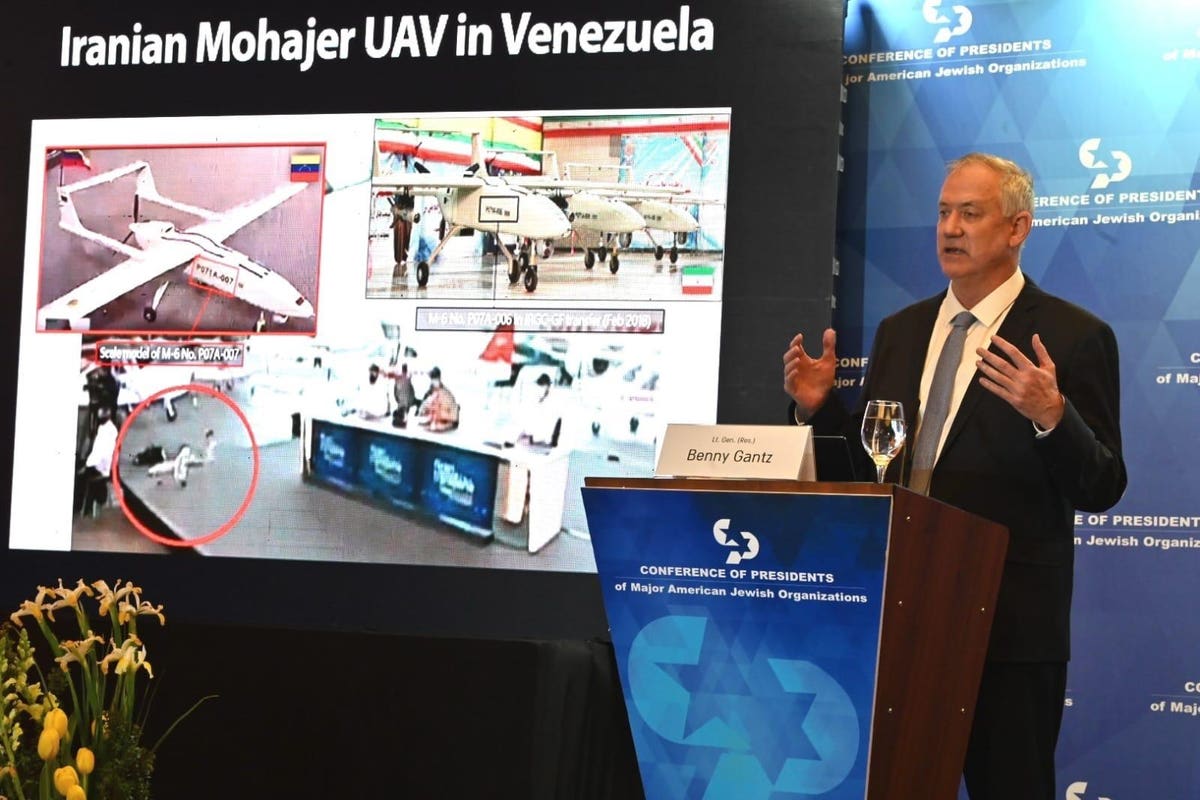The South American country Bolivia has expressed interest in acquiring drone technology from Iran in the latest sign that more countries on the continent are interested in acquiring military drones.
Bolivian Defense Minister Edmundo Novillo confirmed his country’s interest following a demand for information on the matter from neighboring Argentina. Novillo said Bolivia requires Iranian drones to monitor its border regions and provide real-time footage to its armed forces.
Argentina has also shown an interest in drones manufactured in the Middle East. On Dec. 27, 2022, it signed a contract for Hero-120 and Hero-30 loitering munitions (single-use, explosive drones) built by Uvision in Israel, making it the first Latin American country to purchase this series of drones.
Iran is also heavily involved in Venezuela’s drone program, with analysis suggesting it has outsourced the production of loitering munitions, similar to the Shahed series infamously used by Russia against Ukraine, to that South American country.
In 2012, then-Venezuelan President Hugo Chavez confirmed his country was building drones as part of its military cooperation with Iran. However, he stressed those drones only carried cameras and were strictly for self-defense, suggesting they were surveillance drones.
Iran has supplied Mohajer single-engine tactical drones to Venezuela. In February 2022, Israel accused Iran of transferring precision-guided munitions to Venezuela for these drones.
In October 2022, Iranian Major General Yahya Safavi claimed, “22 world countries are demanding to purchase unmanned aircraft from Iran.” Venezuela was one of the countries he mentioned.
While Iran and Israel seem poised to export more drones to South America, the market for unmanned aerial vehicles (UAVs) in that region is relatively small. Turkey repeatedly made headlines in recent years for exporting its Bayraktar TB2 drone to 30 countries. Nevertheless, none of those countries were in South America.
There has also been a notable uptick in the number of drones imported by African countries. Ethiopia, for example, acquired drones from China, Iran, and Turkey. Israel has also sold drones to Morocco since the 2020 Abraham Accords.
South America may soon follow suit by seeking more drones from eager exporters.
“Bolivia’s interest in Iranian drone technologies indicates that we are in the early stages of military drone proliferation across the continent,” James Patton Rogers of the Cornell Tech Policy Institute told me.
“This is fueled by rivals and competing exporters, like Iran and Israel, but also competing ideological and geopolitical interests that divide the continent,” he said.
Argentina and Bolivia share a border. Consequently, their separate procurements of drones from Iran and Israel is arousing suspicions and tensions.
“These drones usually come with operatives from the supplying state to aid in training and maintenance, and it is still unclear who has access to the intelligence data gathered by these drones,” Rogers said. “Such concerns are likely to heighten security tensions in the region, and so transparency in the capabilities and intent of these drones is key to ensure regional stability.”
Cheap drones of the kind Iran builds large numbers of are also attractive to South American buyers, many of which have limited funds.
“Since many countries in South America do not have large military budgets, they may opt to procure UAVs they think can best fit their requirements, such as relatively low costs and significant combat potential,” Samuel Bendett, a research analyst with the Center for Naval Analyses, told me.
“Iranian drones like Shahed fit that category, and Iran has indicated there are many countries interested in acquiring their UAVs,” he said. “Therefore, it’s not surprising that Bolivia may be next in line after Venezuela, Ethiopia, Tajikistan, and possibly Armenia to get Iranian drones.”
South American countries may also manufacture drones.
“South America countries have the potential to produce military drones of their own and locally manufacture foreign designs, which could also fuel regional proliferation,” Rogers said, citing Venezuela as a key example.
Bendett also believes it is “likely” these countries will manufacture drones.
“Certainly, when it comes to dual-use light ISR (intelligence, surveillance, and reconnaissance) drones for law enforcement and border patrol, there are multiple state, non-state, academic, and private sector efforts around the world already doing just that,” he said.
“The expertise, knowledge, and components needed to construct such drones are readily available.”
Both Bendett and Rogers believe the ongoing Ukraine war played a significant role in the global proliferation of drones.
“Many drone types used in Ukraine are of interest to many countries around the world – Ukrainian, American, Turkish, Russian, and Iranian designs,” Bendett said.
Rogers noted that the Russian war on Ukraine has “fueled” this worldwide interest in various drone types.
“The war has been a shop window for Iran and Turkey (amongst others), showing the world what their weapons can do,” he said. “Indeed, drones have been used to target energy infrastructure, troops on the battlefield, and civilian centers.”
“With this in mind, the longer-term worry should be that as drones spread, the disturbing practices of use set in Ukraine will follow them,” he added.
Rogers fears the “uncontrolled proliferation” of military drones, which, he argued to the U.N. Security Council in August, poses an increasing “transnational threat” to the security of an increasing number of countries worldwide.
“Today, 113 nations have access to military drone technologies, and my worry is that South America could end up resembling parts of Africa or Europe by the end of the decade: with leading drone producers like Turkey, China, the U.S., or even Russia vying for a share of an emergent market,” he said.
“We need only look at Argentina’s acquisition of Israeli ‘Hero’ loitering munitions as a key example of the spread of armed military drones in the region.”
Bendett also foresees increasing drone proliferation in South America, noting that a number of countries are already selling to the region and that “Russia is seeking to enter this market as well.”
“And it’s likely that other drone developers may follow,” he said.
Read the full article here





